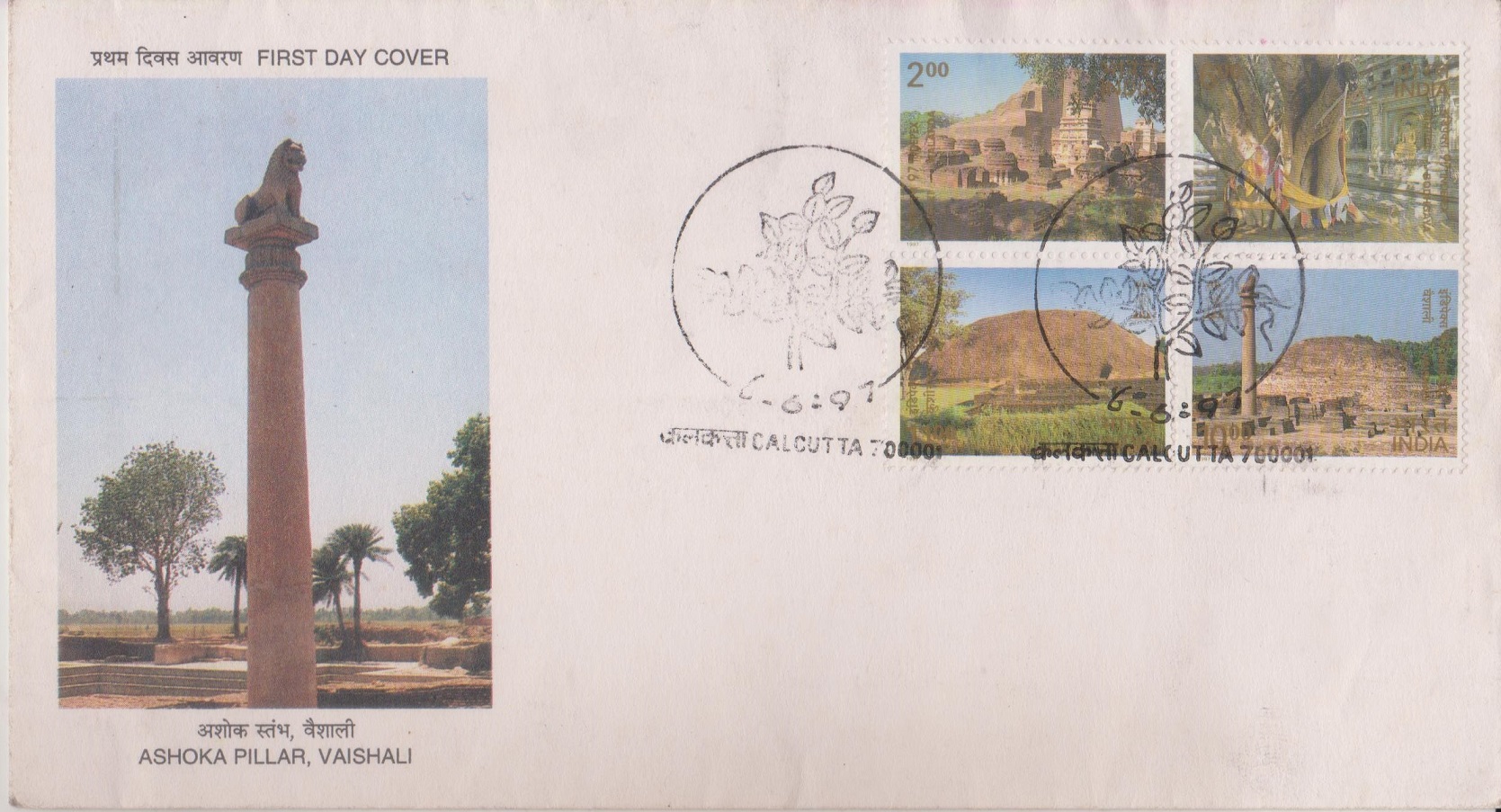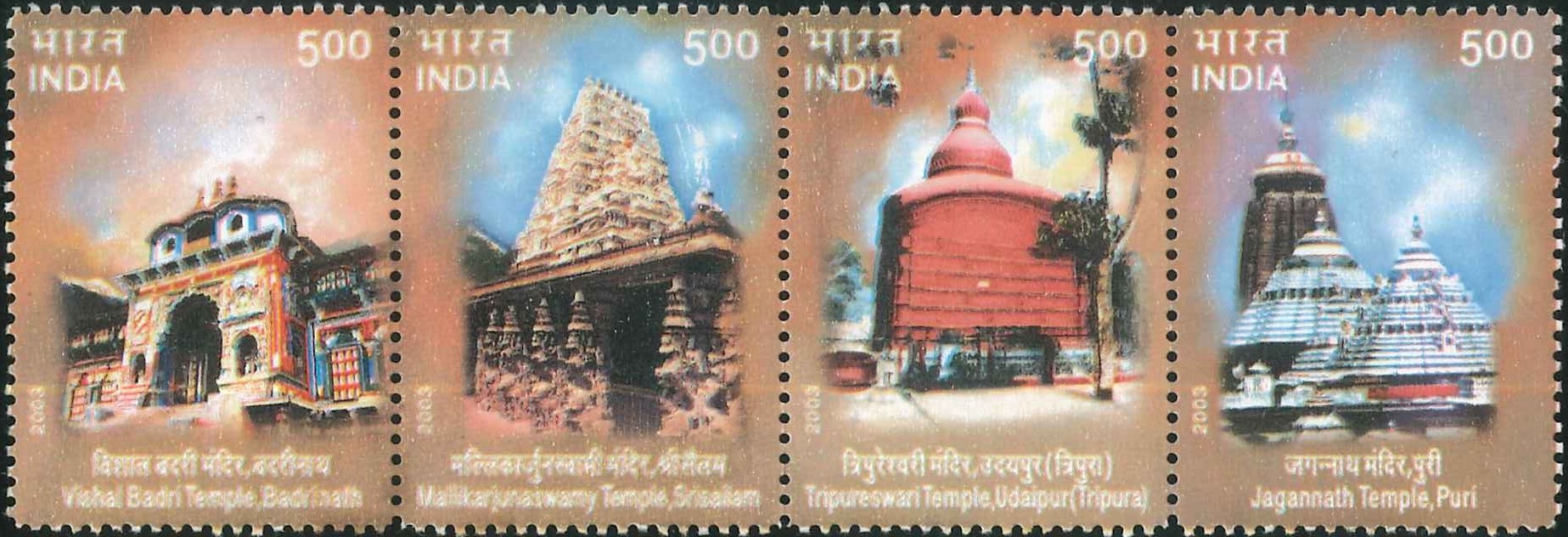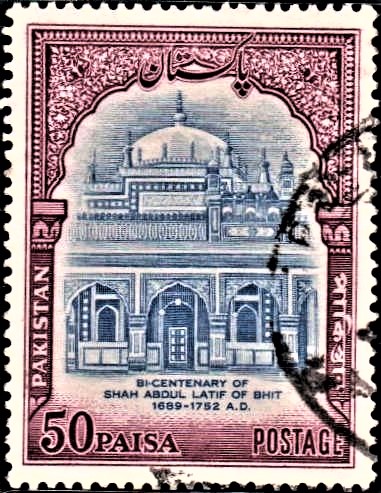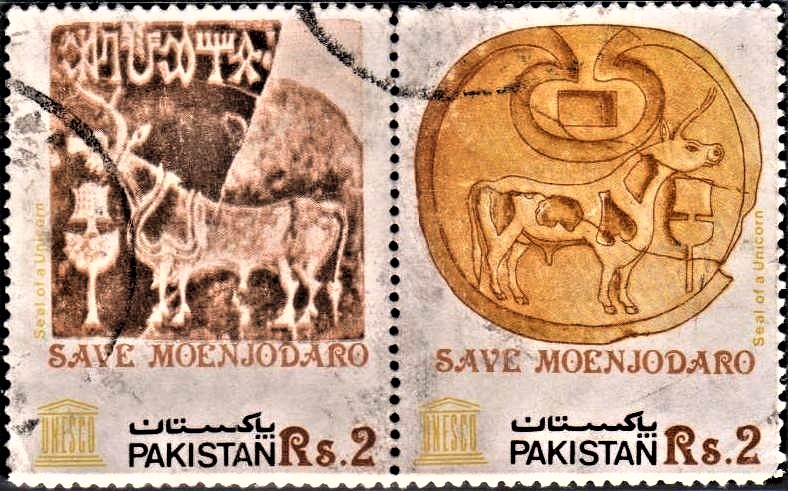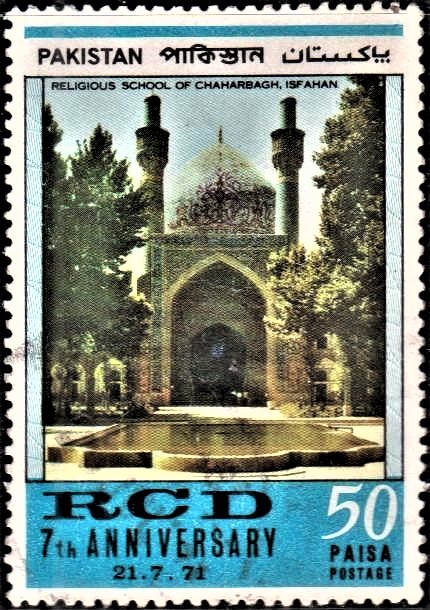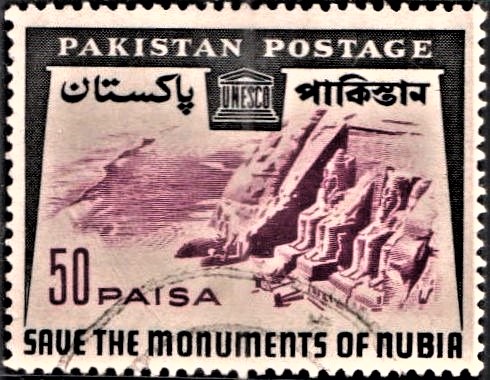
Save the Monuments of Nubia
A set of two commemorative postage stamps on the Save Nubia Project (SNP) : Abu Simbel temples, Nubia, southern Egypt (near Sudan border) :
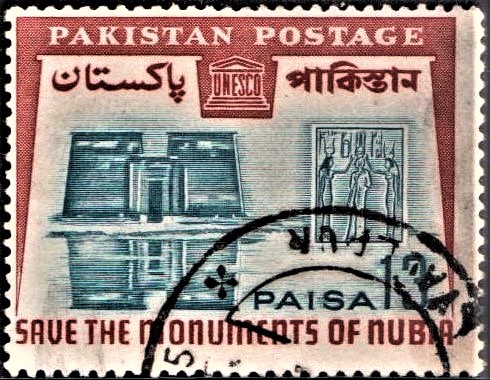
 Issued by Pakistan
Issued by Pakistan
Issued on Mar 30, 1964
Issued for : Pakistan Post Office is issuing a set of two Commemorative Postage Stamps in response to the appeal of the UNESCO and thus joins the large community of nations who are interested in preserving for future generations the wonderous structures, the veritable open-air museum, of what once was Nubia.
Design :
13–paisa : Depicts the ‘Temple of Thot‘ on the left and an inset of three standing figures on the right. The inset is relevant to the ‘Temple of Thot‘ and represents Queen Nefertari (in the middle) and her maids performing some ritual.
50-paisa : Depicts a side view of the rock containing four colossal figures of Rameses II. This is generally known as the Temple of Abu Simbel. A partial view of the river Nile and its banks is also shown on the left.
Type : Stamps, Postal Used
Denomination : 13 and 50 Paisa
Colour :
13 Paisa – Crimson / Turquoise Blue
50 Paisa – Grey / Purple
Size of Stamp : 31 x 40 mm.
Size of Print : 28 x 37 mm.
Perforation Gauge : 13 x 13½ (C)
Quantity Printed :
13–paisa – 13,14,000
50-paisa – 10,00,000
Number of Stamps in each sheet : 80
Process of Printing : Recess
Printers : The Pakistan Security Printing Corporation Ltd., Karachi
About :
- NUBIA, 300 mile-long strip of land, runs along the River Nile in parts of Egypt (U.A.R.) and Sudan. This stretch of land is strewn with countless temples, tombs, and statues of varying sizes carved out of sandstones, hewn from the priceless quarries of Nubia. Temples are also built into the sides of cliffs of the Libyan and the Arabian mountains, bordering the Nile. These monuments of Nubia, ranking amongst the most magnificent on earth and more than 4,000 years old, indicate the rise and fall of various dynasties in the Land of Pharaohs. The temples include, among others, those of the Philae, Amada, Kalabsha and Abu Simbel.
- Egypt, long known as the Gift of Nile, requires more and more water for irrigation purposes to feed its growing population and meet its expanding requirements. For irrigation in spring and summer, a dam was built on the Nile at Aswan between 1899 and 1902. This has, however, been found to be inadequate, and an immense volume of water is lost to the sea. To make gainful use of this water and to achieve better and higher-group yields, as also hydro-electric energy, work has already begun on the Great Aswan Dam. Within five years, the middle valley of the Nile will be turned into an artificial lake, some 300 miles in length. With the emergence of this lake, the monuments of Nubia would have been submerged and lost. At the instance of the Republics of the U.A.R. and of Sudan, the UNESCO has started operations for removing the monuments of Nubia to safer places.
- With the compliments of the Director-General, Pakistan Post Office, Karachi.


